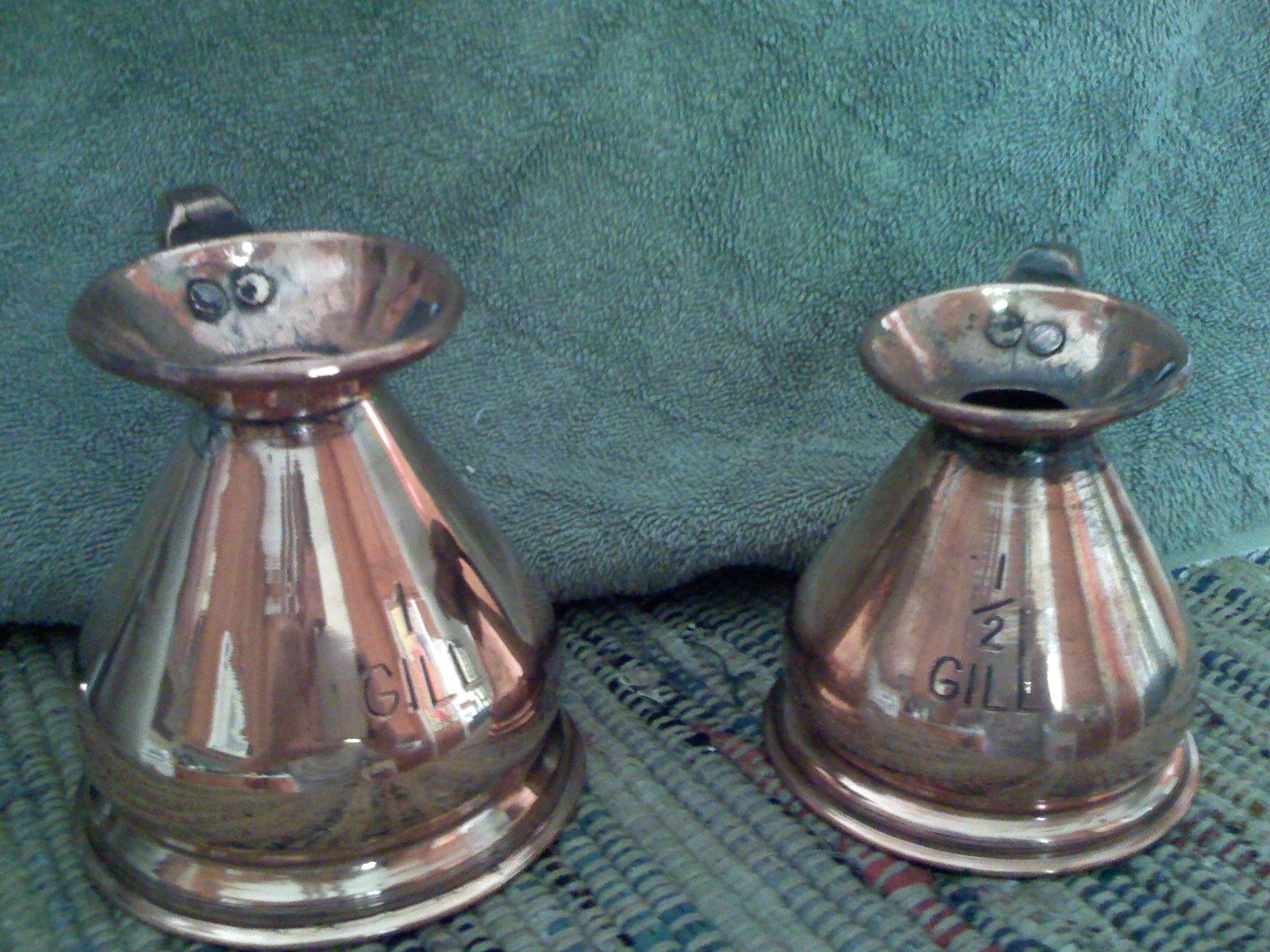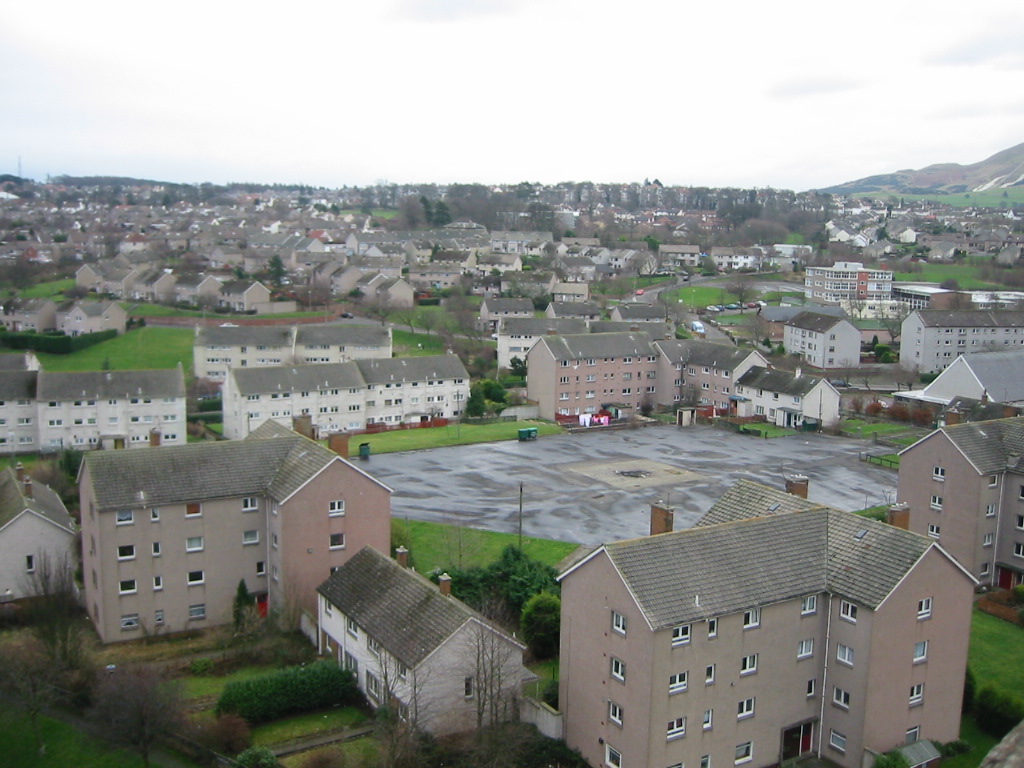|
Chopin (unit)
The chopin was a Scottish measurement of volume, usually for fluids, that was in use from at least 1661, though possibly 15th century, until the mid 19th century.* The measurement was derived from the French measure ''chopine'' an old and widespread unit of liquid capacity, first recorded in the 13th century. A chopin is equivalent to 0.848 litres. * 1 chopin is 8 gills * 1 chopin is 2 mutchkins * 2 chopins is the equivalent of 1 (Scots) pint (or joug) * 16 chopins is the equivalent of 1 (Scots) gallon References See also * Obsolete Scottish units of measurement Scottish or Scots units of measurement are the weights and measures peculiar to Scotland which were nominally replaced by English units in 1685 but continued to be used in unofficial contexts until at least the late 18th century. The system was ... Obsolete Scottish units of measurement Units of volume 17th-century establishments in Scotland 17th-century introductions 19th-century disestablishments in Scotland ... [...More Info...] [...Related Items...] OR: [Wikipedia] [Google] [Baidu] |
Litre
The litre (international spelling) or liter (American English spelling) (SI symbols L and l, other symbol used: ℓ) is a metric unit of volume. It is equal to 1 cubic decimetre (dm3), 1000 cubic centimetres (cm3) or 0.001 cubic metre (m3). A cubic decimetre (or litre) occupies a volume of (see figure) and is thus equal to one-thousandth of a cubic metre. The original French metric system used the litre as a base unit. The word ''litre'' is derived from an older French unit, the '' litron'', whose name came from Byzantine Greek—where it was a unit of weight, not volume—via Late Medieval Latin, and which equalled approximately 0.831 litres. The litre was also used in several subsequent versions of the metric system and is accepted for use with the SI,Bureau International des Poids et ... [...More Info...] [...Related Items...] OR: [Wikipedia] [Google] [Baidu] |
Gill (unit)
__NOTOC__ The gill or teacup is a unit of measurement for volume equal to a quarter of a pint. It is no longer in common use, except in regard to the volume of alcoholic spirits measures. ;In imperial units: : ;In United States customary units: : In Great Britain, the standard single measure of spirits in a pub was in England, and in Scotland, while the was also a common measure in Scotland, and still remains as the standard measure in pubs in Ireland. After metrication, this was replaced by measures of either , at the discretion of the proprietor. A spirit measure in the Isle of Man is still defined as . Half of a gill is a jack, or an eighth of a pint. But in northern England, a quarter pint could also be called a jack or a noggin, rather than a gill, and in some areas a half pint could be called a gill, particularly for beer and milk. In Ireland, the standard spirit measure was historically gill. In the Republic of Ireland, it still retains this value, thou ... [...More Info...] [...Related Items...] OR: [Wikipedia] [Google] [Baidu] |
Mutchkin
''Disambiguation: a "mutchkin" can also refer a close-fitting Scottish cap''. The mutchkin ( gd, mùisgein) was a Scottish unit of liquid volume measurement that was in use from at least 1661 (and possibly as early as the 15th century) until the late 19th century, approximately equivalent to 424 mL, or roughly imperial pint. The word was derived from – a mid 15th-century Dutch measure of beer or wine. *A mutchkin could be subdivided into four Scottish gills (of approximately 106 mL each) – this was roughly equivalent to three imperial gills or three-quarters of an imperial pint. *Two mutchkins (848 mL) made one chopin. *Four mutchkins (1696 mL) made one Scottish pint (or ''joug''), roughly equivalent to three imperial pints (1705 mL).* See also * Obsolete Scottish units of measurement Scottish or Scots units of measurement are the weights and measures peculiar to Scotland which were nominally replaced by English units in 1685 but continued ... [...More Info...] [...Related Items...] OR: [Wikipedia] [Google] [Baidu] |
Pint (Scots)
The joug or scottish pint () was a Scottish unit of liquid volume measurement that was in use from at least 1661 – possibly as early as the 15th century – until the early 19th century, approximately equivalent to 1696 mL or roughly three imperial pints. The standard was held at Stirling and thereby called the Stirling Jug. It went astray in 1745 and its loss was hidden by replacement by a standard pewter jug of roughly the same size. The error was discovered by Rev Alexander Bryce in 1750, who after a long search found the damaged jug in the attic of a Mr Urquhart, a coppersmith in Stirling, and restored the standard. Bakers used the measure until the late 19th century. * One joug was sixteen Scottish gills (of approximately 106 mL each) * One joug was four mutchkins (of approximately 424 mL each) * One joug was two chopins (of approximately 828 mL each) * Eight jougs made a Scottish gallon (approximately 13.568 L) See also * Obsolete Scottish un ... [...More Info...] [...Related Items...] OR: [Wikipedia] [Google] [Baidu] |
Gallon (Scots)
The Scots gallon ( gd, galan) was a unit of liquid volume measurement that was in use in Scotland from at least 1661 – and possibly as early as the 15th century – until the late 19th century. It was approximately equivalent to 13.568 litres, or very roughly three times larger than the Imperial gallon that was adopted in 1824. A Scots gallon could be subdivided into eight Jougs (or Scots pints, of 1696 mL each), or into sixteen chopins (of 848 mL each). An ale or beer barrel was 12 Scots gallons (35.81 Imperial gallons 62.816 litres. Articles of Union (1707), Article VII (tax on liquor). ''That all parts of the United Kingdom be for ever from and after the Union lyable to the same Excises upon all Exciseable Liquors excepting only that the 34 Gallons English Barrel of Beer or Ale amounting to 12 Gallons Scots present measure sold in Scotland by the Brewer at 9/6d Sterling excluding all Duties and Retailed including Duties and the Retailer's profit at 2d the Scots pint ... [...More Info...] [...Related Items...] OR: [Wikipedia] [Google] [Baidu] |
Obsolete Scottish Units Of Measurement
Scottish or Scots units of measurement are the weights and measures peculiar to Scotland which were nominally replaced by English units in 1685 but continued to be used in unofficial contexts until at least the late 18th century. The system was based on the ell (length), stone (mass), and boll and firlot (volume). This official system coexisted with local variants, especially for the measurement of land area. The system is said to have been introduced by David I of Scotland (1124–53), although there are no surviving records until the 15th century when the system was already in normal use. Standard measures and weights were kept in each burgh, and these were periodically compared against one another at "assizes of measures", often during the early years of the reign of a new monarch. Nevertheless, there was considerable local variation in many of the units, and the units of dry measure steadily increased in size from 1400 to 1700... The Scots units of length were technicall ... [...More Info...] [...Related Items...] OR: [Wikipedia] [Google] [Baidu] |
Units Of Volume
A unit of volume is a unit of measurement for measuring volume or capacity, the extent of an object or space in three dimensions. Units of capacity may be used to specify the volume of fluids or bulk goods, for example water, rice, sugar, grain or flour. Units According to the SI system, the base unit for measuring length is the metre. The SI unit of volume is thus the cubic metre, which is a derived unit, where: at nist.gov. Retrieved 29 June 2022. 1 m3 = 1 m • 1 m • 1 m. Comparison Forestry and timber industry British Commonwealth * Hoppus, cubic foot measure used in the Briti ...[...More Info...] [...Related Items...] OR: [Wikipedia] [Google] [Baidu] |
17th-century Establishments In Scotland
The 17th century lasted from January 1, 1601 ( MDCI), to December 31, 1700 ( MDCC). It falls into the early modern period of Europe and in that continent (whose impact on the world was increasing) was characterized by the Baroque cultural movement, the latter part of the Spanish Golden Age, the Dutch Golden Age, the French '' Grand Siècle'' dominated by Louis XIV, the Scientific Revolution, the world's first public company and megacorporation known as the Dutch East India Company, and according to some historians, the General Crisis. From the mid-17th century, European politics were increasingly dominated by the Kingdom of France of Louis XIV, where royal power was solidified domestically in the civil war of the Fronde. The semi-feudal territorial French nobility was weakened and subjugated to the power of an absolute monarchy through the reinvention of the Palace of Versailles from a hunting lodge to a gilded prison, in which a greatly expanded royal court could be more easil ... [...More Info...] [...Related Items...] OR: [Wikipedia] [Google] [Baidu] |
17th-century Introductions
The 17th century lasted from January 1, 1601 ( MDCI), to December 31, 1700 ( MDCC). It falls into the early modern period of Europe and in that continent (whose impact on the world was increasing) was characterized by the Baroque cultural movement, the latter part of the Spanish Golden Age, the Dutch Golden Age, the French ''Grand Siècle'' dominated by Louis XIV, the Scientific Revolution, the world's first public company and megacorporation known as the Dutch East India Company, and according to some historians, the General Crisis. From the mid-17th century, European politics were increasingly dominated by the Kingdom of France of Louis XIV, where royal power was solidified domestically in the civil war of the Fronde. The semi-feudal territorial French nobility was weakened and subjugated to the power of an absolute monarchy through the reinvention of the Palace of Versailles from a hunting lodge to a gilded prison, in which a greatly expanded royal court could be more easily ... [...More Info...] [...Related Items...] OR: [Wikipedia] [Google] [Baidu] |
19th-century Disestablishments In Scotland
The 19th (nineteenth) century began on 1 January 1801 ( MDCCCI), and ended on 31 December 1900 ( MCM). The 19th century was the ninth century of the 2nd millennium. The 19th century was characterized by vast social upheaval. Slavery was abolished in much of Europe and the Americas. The First Industrial Revolution, though it began in the late 18th century, expanding beyond its British homeland for the first time during this century, particularly remaking the economies and societies of the Low Countries, the Rhineland, Northern Italy, and the Northeastern United States. A few decades later, the Second Industrial Revolution led to ever more massive urbanization and much higher levels of productivity, profit, and prosperity, a pattern that continued into the 20th century. The Islamic gunpowder empires fell into decline and European imperialism brought much of South Asia, Southeast Asia, and almost all of Africa under colonial rule. It was also marked by the collapse of the lar ... [...More Info...] [...Related Items...] OR: [Wikipedia] [Google] [Baidu] |





